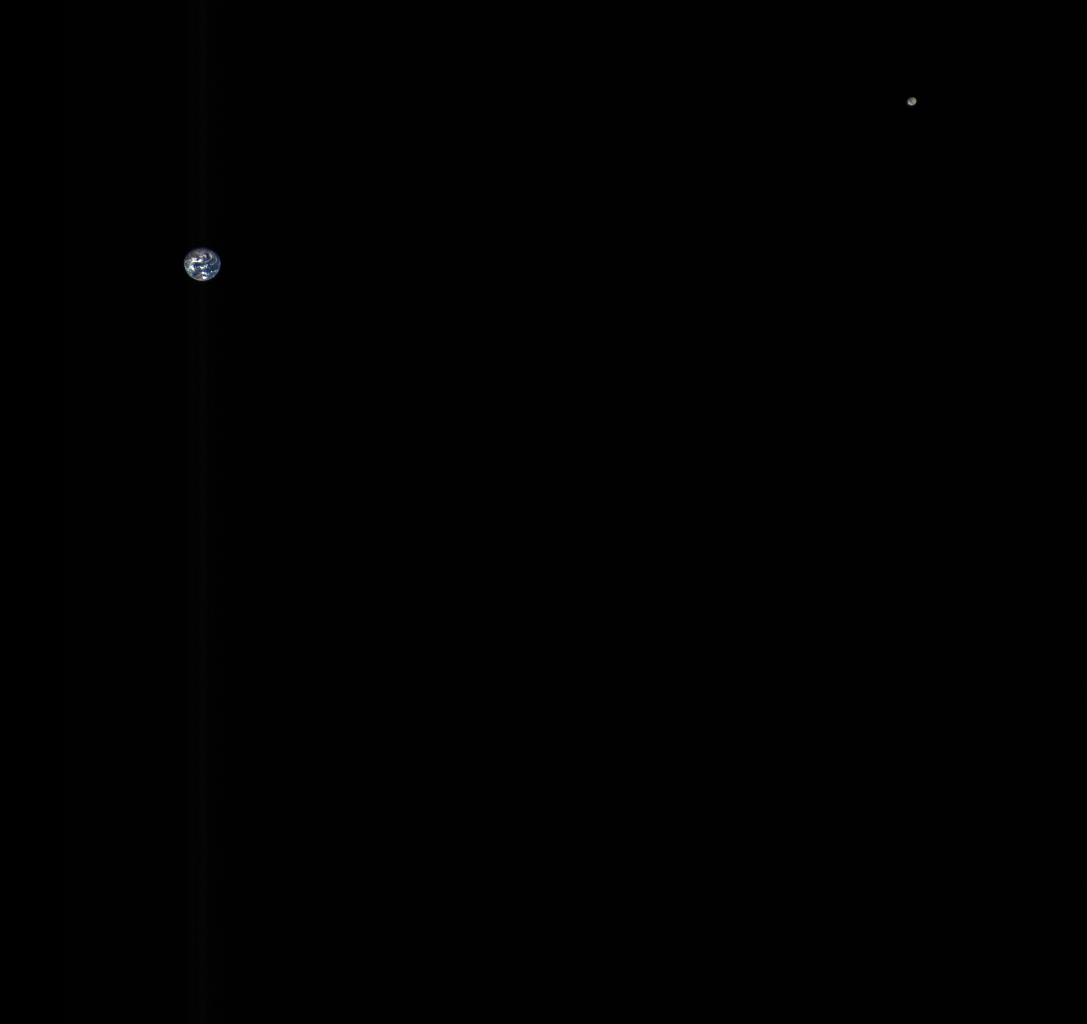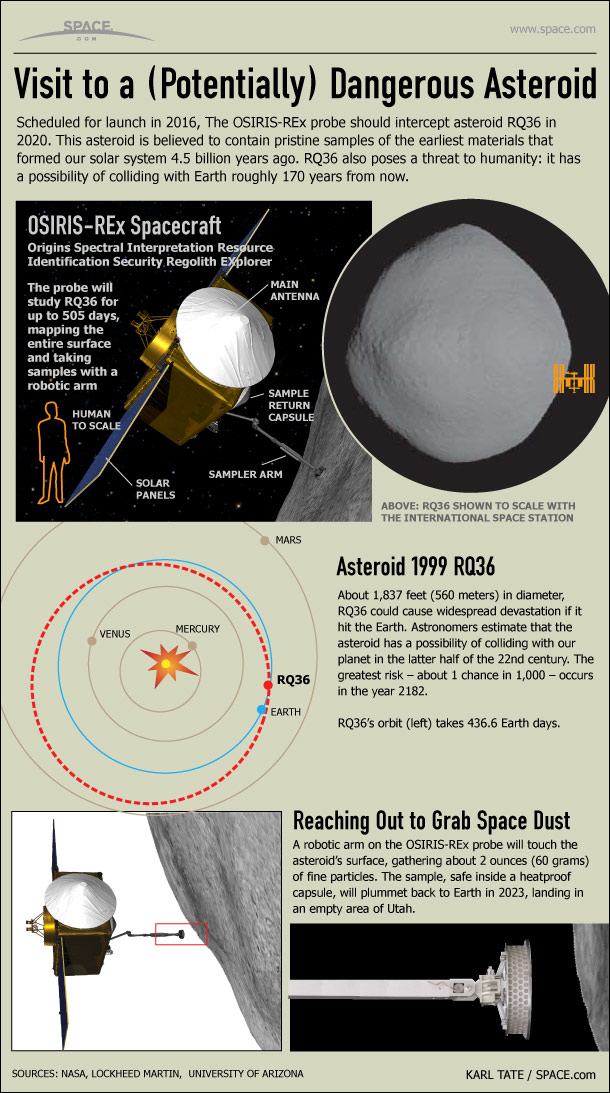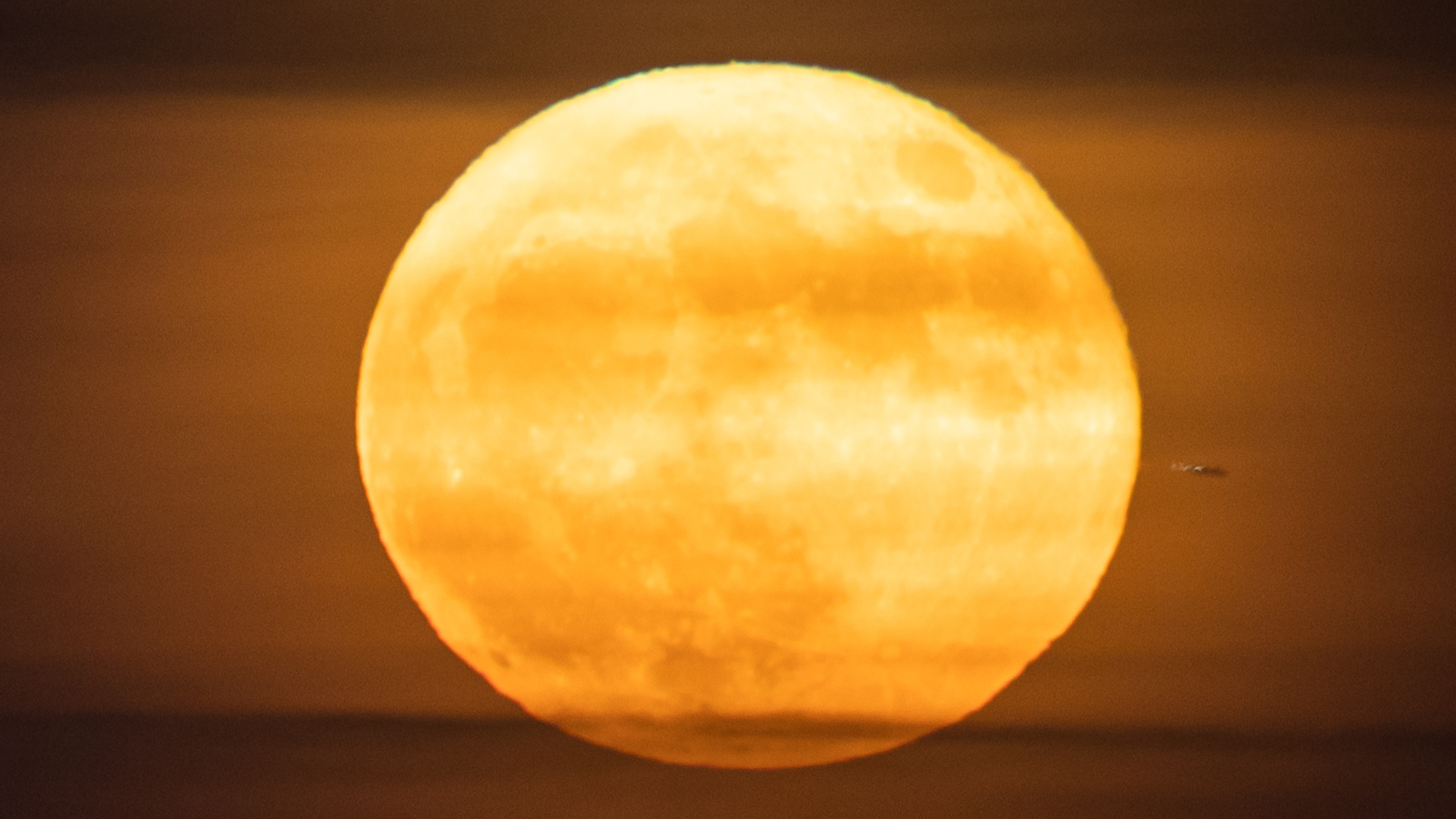Asteroid-Bound Spacecraft Snaps Color Pic of Earth and Moon

About halfway through its two-year trek to the asteroid Bennu, NASA's OSIRIS-REx spacecraft took some stunning images of Earth and the moon as it whizzed past its home planet last fall.
OSIRIS-REx launched toward the near-Earth asteroid Bennu in 2016, and it returned to Earth for a close flyby on Sept. 22. This encounter gave the spacecraft a speed boost and set it right on course to rendezvous with Bennu in late 2018.
This color composite from OSIRIS-REx's MapCam instrument shows Earth and the moon as seen from the spacecraft on Oct. 2, 2017, about 10 days after the gravity-assist maneuver. At the time, it was a little over 3 million miles (5 million kilometers) from Earth, or about 13 times the distance from the Earth to the moon. [OSIRIS-REx: NASA's Asteroid Sample-Return Mission in Pictures]

To create this color composite, NASA scientists combined three images that were taken using three different color filters. They then color corrected the resulting image of Earth and brightened the moon to make it more easily visible. NASA featured the image online on Tuesday (Jan. 2).
"OSIRIS-REx is a mission to figure out where we came from, as asteroids are remnants from the formation of our solar system. But while the spacecraft might tell us some things about where we have been and where we are headed, it also can remind us of where we are right now," NASA officials said in a statement.
After OSIRIS-REx approaches asteroid Bennu in August of this year, it will spend another 18 months in orbit, studying the asteroid. In 2020, it will attempt to collect a sample of the asteroid before heading back to Earth.
Email Hanneke Weitering at hweitering@space.com or follow her @hannekescience. Follow us @Spacedotcom, Facebook and Google+. Original article on Space.com.
Get the Space.com Newsletter
Breaking space news, the latest updates on rocket launches, skywatching events and more!
Join our Space Forums to keep talking space on the latest missions, night sky and more! And if you have a news tip, correction or comment, let us know at: community@space.com.

Hanneke Weitering is a multimedia journalist in the Pacific Northwest reporting on the future of aviation at FutureFlight.aero and Aviation International News and was previously the Editor for Spaceflight and Astronomy news here at Space.com. As an editor with over 10 years of experience in science journalism she has previously written for Scholastic Classroom Magazines, MedPage Today and The Joint Institute for Computational Sciences at Oak Ridge National Laboratory. After studying physics at the University of Tennessee in her hometown of Knoxville, she earned her graduate degree in Science, Health and Environmental Reporting (SHERP) from New York University. Hanneke joined the Space.com team in 2016 as a staff writer and producer, covering topics including spaceflight and astronomy. She currently lives in Seattle, home of the Space Needle, with her cat and two snakes. In her spare time, Hanneke enjoys exploring the Rocky Mountains, basking in nature and looking for dark skies to gaze at the cosmos.
